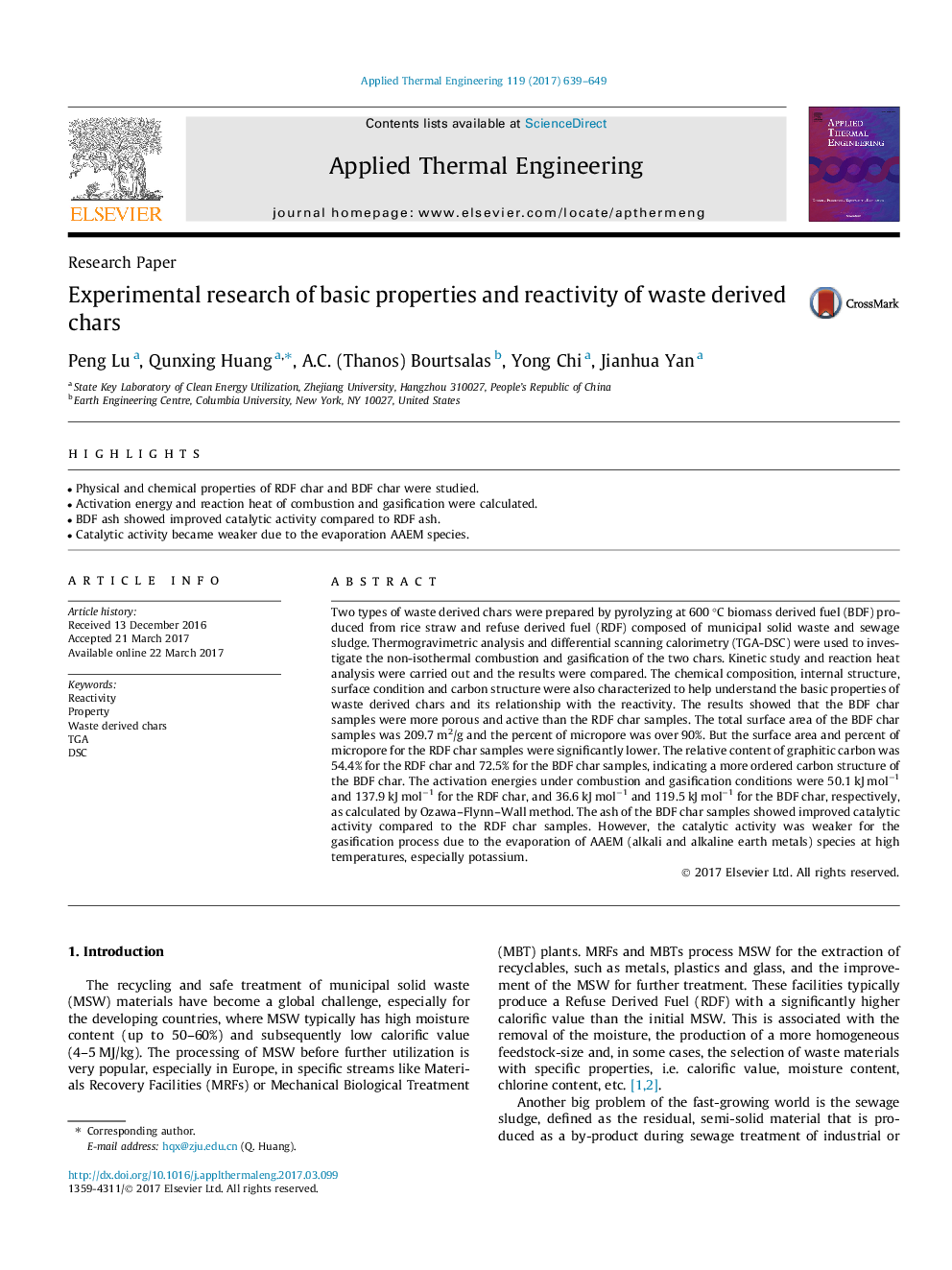| Article ID | Journal | Published Year | Pages | File Type |
|---|---|---|---|---|
| 4991325 | Applied Thermal Engineering | 2017 | 11 Pages |
Abstract
Two types of waste derived chars were prepared by pyrolyzing at 600 °C biomass derived fuel (BDF) produced from rice straw and refuse derived fuel (RDF) composed of municipal solid waste and sewage sludge. Thermogravimetric analysis and differential scanning calorimetry (TGA-DSC) were used to investigate the non-isothermal combustion and gasification of the two chars. Kinetic study and reaction heat analysis were carried out and the results were compared. The chemical composition, internal structure, surface condition and carbon structure were also characterized to help understand the basic properties of waste derived chars and its relationship with the reactivity. The results showed that the BDF char samples were more porous and active than the RDF char samples. The total surface area of the BDF char samples was 209.7 m2/g and the percent of micropore was over 90%. But the surface area and percent of micropore for the RDF char samples were significantly lower. The relative content of graphitic carbon was 54.4% for the RDF char and 72.5% for the BDF char samples, indicating a more ordered carbon structure of the BDF char. The activation energies under combustion and gasification conditions were 50.1 kJ molâ1 and 137.9 kJ molâ1 for the RDF char, and 36.6 kJ molâ1 and 119.5 kJ molâ1 for the BDF char, respectively, as calculated by Ozawa-Flynn-Wall method. The ash of the BDF char samples showed improved catalytic activity compared to the RDF char samples. However, the catalytic activity was weaker for the gasification process due to the evaporation of AAEM (alkali and alkaline earth metals) species at high temperatures, especially potassium.
Keywords
Related Topics
Physical Sciences and Engineering
Chemical Engineering
Fluid Flow and Transfer Processes
Authors
Peng Lu, Qunxing Huang, A.C. (Thanos) Bourtsalas, Yong Chi, Jianhua Yan,
